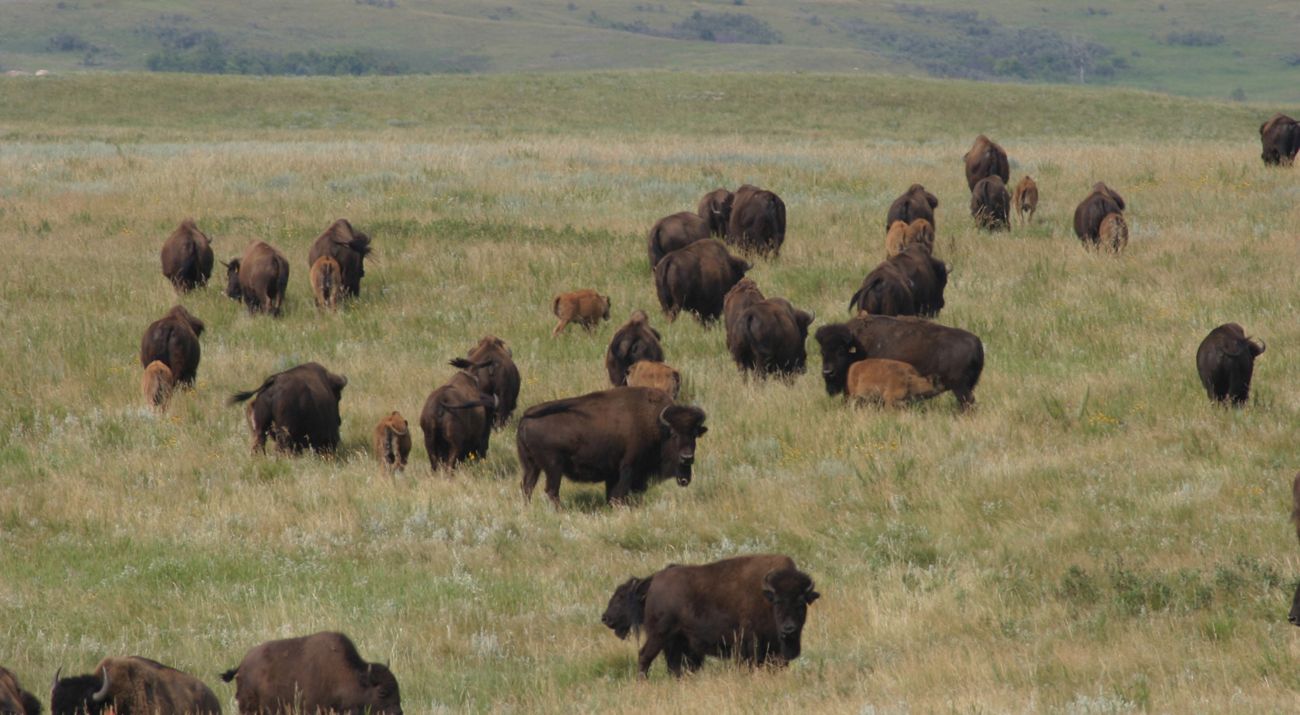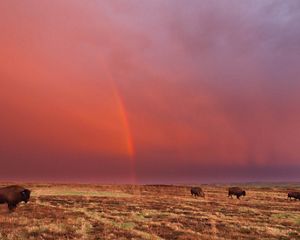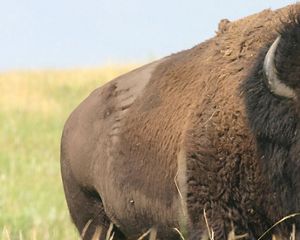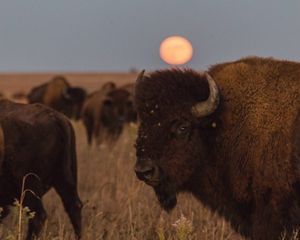
Hundreds of Buffalo Returned to Ancestral Lands in Nationwide, Indigenous-led Movement
Buffalo from TNC preserves in North Dakota, South Dakota and elsewhere were transferred to Indigenous communities.
More than a dozen Indigenous communities welcomed more than 540 buffalo, also known as American bison, back to ancestral grazing lands across the nation in 2024 as part of a multi-state, Indigenous-led initiative by the InterTribal Buffalo Council (ITBC), Tanka Fund and partner The Nature Conservancy (TNC). The initiative’s goal is to restore this keystone species, which plays a crucial role in spiritual and cultural revitalization, ecological restoration and conservation, food sovereignty, health and economic development for Indigenous Peoples.
Since 2020, partnerships with organizations such as ITBC and Tanka Fund have facilitated the return of more than 2,300 buffalo from TNC preserves in Colorado, Illinois, Indiana, Iowa, Kansas, Missouri, Nebraska, North Dakota, South Dakota and Oklahoma to Indigenous communities.
In late 2024, 543 buffalo from TNC preserves were transferred to ITBC Member Nations and Tanka Fund caretakers in Iowa, Kansas, Minnesota, Montana, Nebraska, Oklahoma, South Dakota, Texas, Washington and Wisconsin.
“The buffalo’s journey back to Tribal lands is a journey of healing for the land, our people and future generations,” said Ervin Carlson, ITBC’s board president. “This past year has marked another step forward, and the future holds even greater possibilities for restoration and growth.”
Buffalo rematriation within Native lands is an essential step in repairing the relationships severed by U.S. government policy and the ensuing violence against Native people, as well as the extensive conversion of natural areas. Each buffalo brought home represents a positive force of partnership and perseverance, supporting sustainable economies, workforce development, youth empowerment, food sovereignty and the preservation of Indigenous knowledge for future generations.
"Our collaboration with The Nature Conservancy to restore buffalo to their native lands and caretakers not only honors the rich cultural heritage of Indigenous communities, but it also reinforces our shared commitment to ecological restoration and sustainable practices," said Dawn Sherman, executive director of Tanka Fund. "Together, we are revitalizing families and communities, healing the land and nurturing a thriving future."
The presence of buffalo, which can weigh upwards of 2,000 lbs., helps build resilience against a changing climate. Bison hooves work the ground to create space for new plants to grow, their droppings provide nutrients for soil microorganisms, and native grass seeds can stick to their fur and disperse as the animals move across the land. Their grazing behavior and the effects they have on the prairie help a wide range of wildflowers, plants, insects and amphibians to flourish.
“The Nature Conservancy is a proud partner of this Indigenous-led movement, and we are thrilled that more than 2,300 buffalo have returned home to their ancestral lands,” said Corissa Busse, Buffalo Restoration Program director for The Nature Conservancy. “The restoration of buffalo has been a profound journey of healing for Indigenous communities and for our prairies and grasslands. Together, we are building a future where culture and ecology thrive.”


